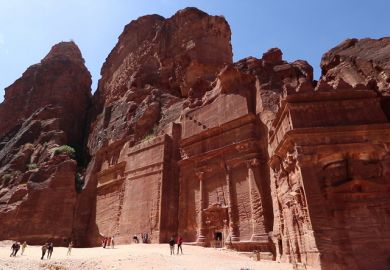Of all of the arts of Roman Britain, mosaic pavements have left the most obvious traces and have most captured the public imagination. It is therefore surprising that they were studied seriously only from 1952, when David Smith compiled a corpus of Romano-British mosaics as an appendix to his doctoral thesis, and thereafter amassed a huge photographic archive at Newcastle University. On his retirement, this archive was presented to the Institute of Classical Studies in London.
Apart from Anne Rainey's Mosaics in Roman Britain (1973), mosaics studies in Britain remained dormant until the founding by Smith in 1979 of the Association for the Study and Preservation of Roman Mosaics (Asprom), which engendered an explosion of interest and research. Asprom itself was a child of Aiema, L'Association Internationale pour l'Etude de la Mosaique Antique, which had been founded in the hope that international mosaic studies would progress, and that member countries would each produce a corpus of all Roman mosaics discovered within its borders.
This monumental first volume of four is the British contribution to the numerous corpora that have appeared in Europe and Africa since the 1960s.
The fact that these foreign publications have been the work of teams of authors makes the work of David Neal and Stephen Cosh all the more impressive.
Neal has been making watercolour recordings of mosaics for almost 50 years, while Cosh has more than 20 years' experience in the craft. Their combined series of paintings prompted the development of the collection into a corpus. The four volumes will cover the whole of Britain and feature the 2,000 mosaics found over the centuries. The present volume covers northern Britain and incorporates the Midlands and East Anglia, featuring some 400 mosaics. It is a handsome work, with beautifully laid out pages, complete with maps, plans and 481 illustrations, of which 220 are in colour. No doubt it will become a standard work and essential to major public and private libraries. It will appeal on all levels to anyone with a love of Roman art and design history.
After an introductory essay on British mosaics, the authors arrange the pavements alphabetically by place name under the counties where they were discovered. A list and county map locate the discoveries. Discussion of each site is accompanied by the authors' paintings and reconstructions, as well as with photographs and historic engravings. Where known, ground plans of the buildings the mosaics came from are included, indicating the rooms they originally occupied and putting them in their architectural context.
Sometimes the only information given for a site is a report that a mosaic was discovered there but that no record of its appearance survives, or that a bag of tesserae in a museum store is all that remains of it. Other mosaics, especially the figured pieces, have extensive entries. A strength of the work in regard to the figured mosaics is the inclusion of all expert theories, however speculative, concerning the iconography of the most enigmatic subjects. As well as drawing on already published works, the authors encouraged Asprom members to write to them concerning particular floors, and have included these personal comments. At the end of most entries, references (not always correct) lead to the extensive bibliography.
Apart from the occasional obfuscation caused by imprecise English, my major criticism concerns the illustrative treatment of some figured mosaics.
Splendid as the authors' recordings are, surely priority should be given to photographs of the originals where these panels survive? In most cases this is properly done. Thus the marine bull from Toft Green in York is shown juxtaposed with the painted recording, which proves a useful and interpretative guide to the panel now in the museum. However, the "Seasons" mosaic, also from Toft Green, only photographically details the bust of "Spring" from the surviving mosaic, and the omission of the others is a serious one. Surprisingly, the text does not question why "Winter" should here be shown almost totally nude. Was it perhaps adapted from another figure when the rest of the floor was remade in antiquity?
The worst example, however, is found with the Bellerophon mosaic from Croughton. Here, the reader is shown only Neal's recording of the entire floor and two photographic details from the mosaic, making total comparison between painting and photograph impossible. The original mosaic has not been published in colour anywhere, and here details such as the Chimaera's mouth show worrying differences between photograph and painting. I hope the projected addendum in volume four will rectify the situation.
The Roman Mosaics of Britain allows us to appreciate the vast number and quality of the mosaics of Britannia. Its lasting achievement will be to show that the country was no backwater but a vibrant province with its own styles and tastes.
Anthony Beeson is art librarian, Bristol Library.
Roman Mosaics of Britain, Volume 1: Northern Britain
Author - David S. Neal and Stephen R. Cosh
Publisher - Illuminata for the Society of Antiquaries of London
Pages - 416
Price - £160.00
ISBN - 0 9537845 2 5
Register to continue
Why register?
- Registration is free and only takes a moment
- Once registered, you can read 3 articles a month
- Sign up for our newsletter
Subscribe
Or subscribe for unlimited access to:
- Unlimited access to news, views, insights & reviews
- Digital editions
- Digital access to THE’s university and college rankings analysis
Already registered or a current subscriber? Login



